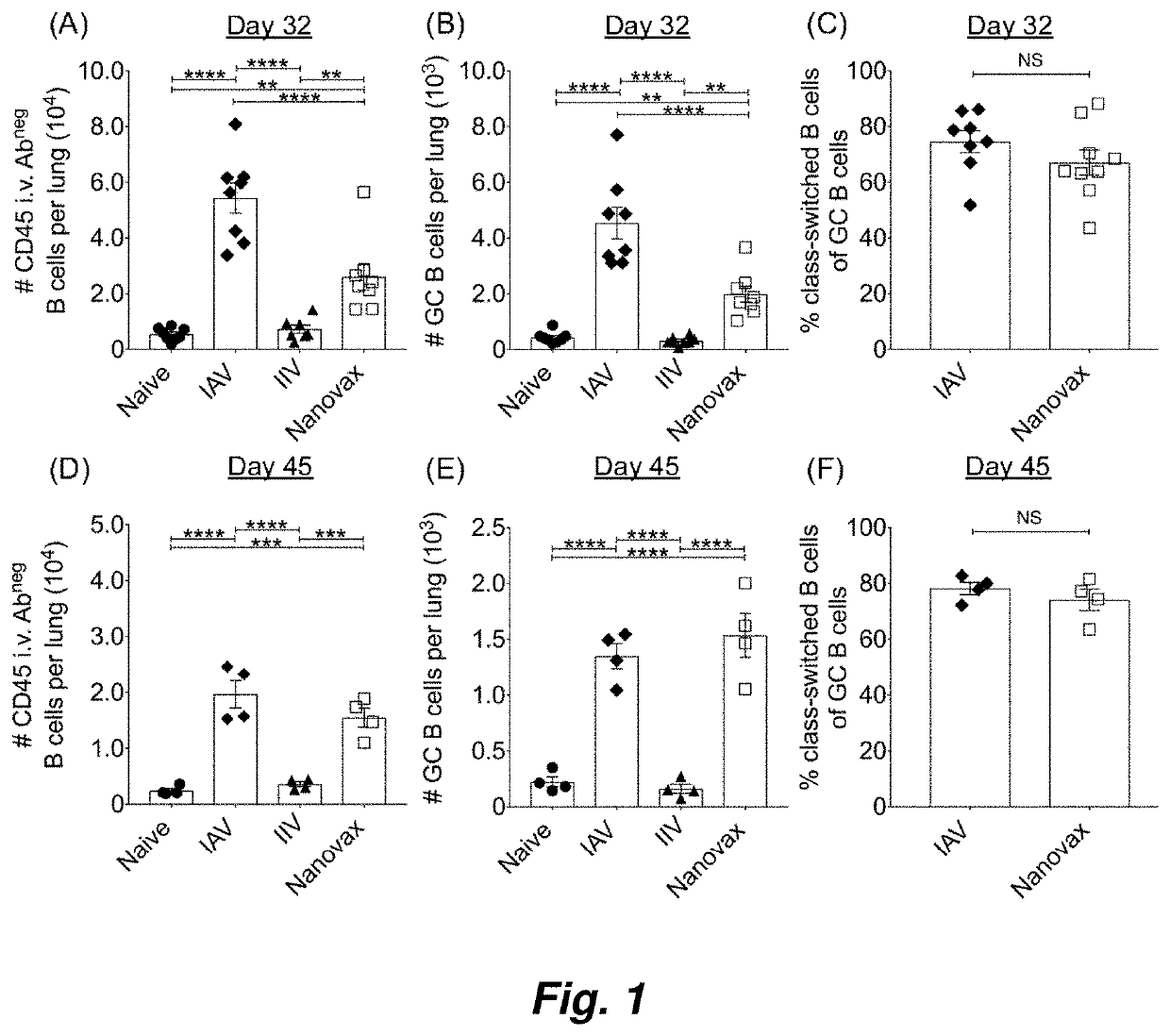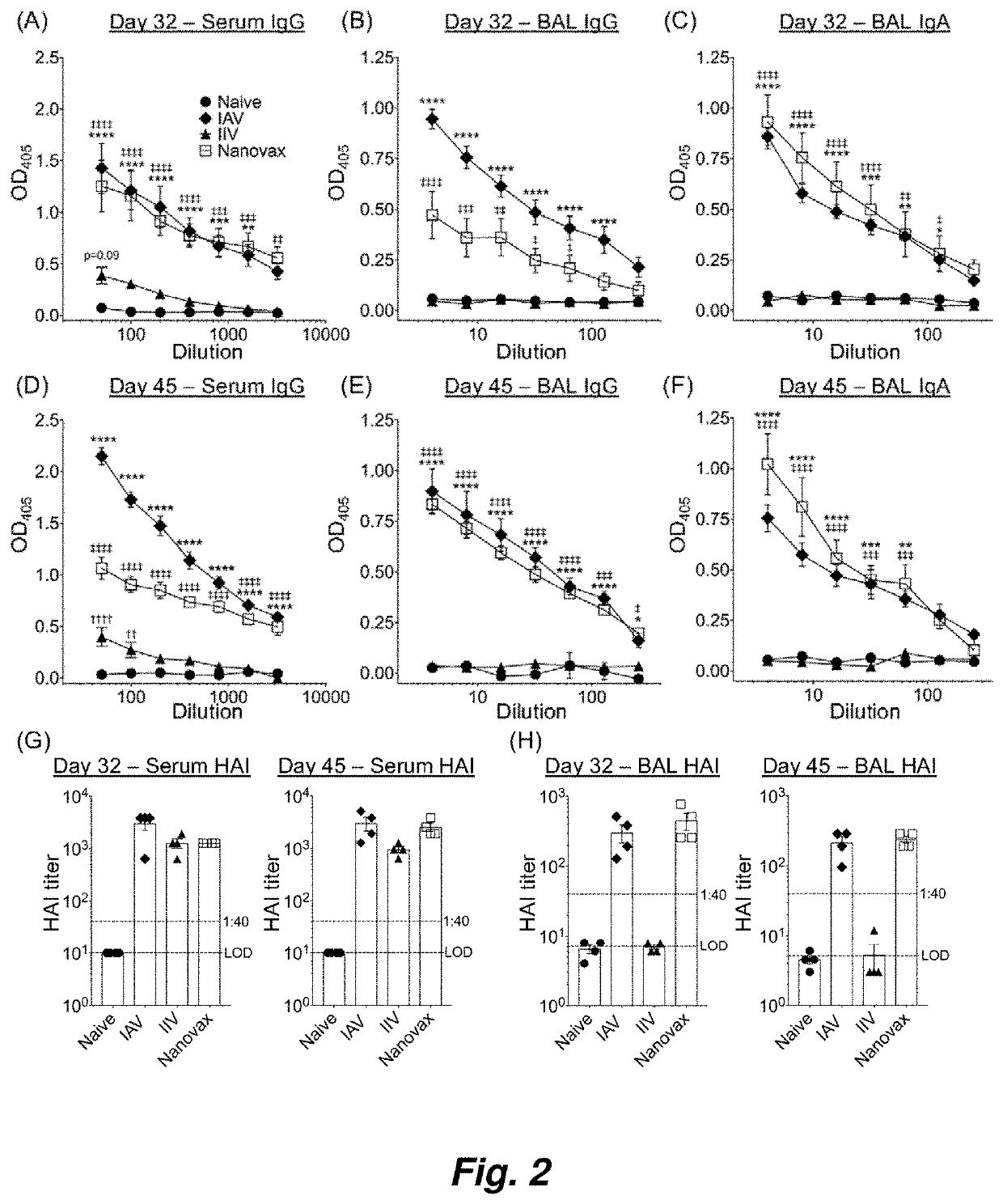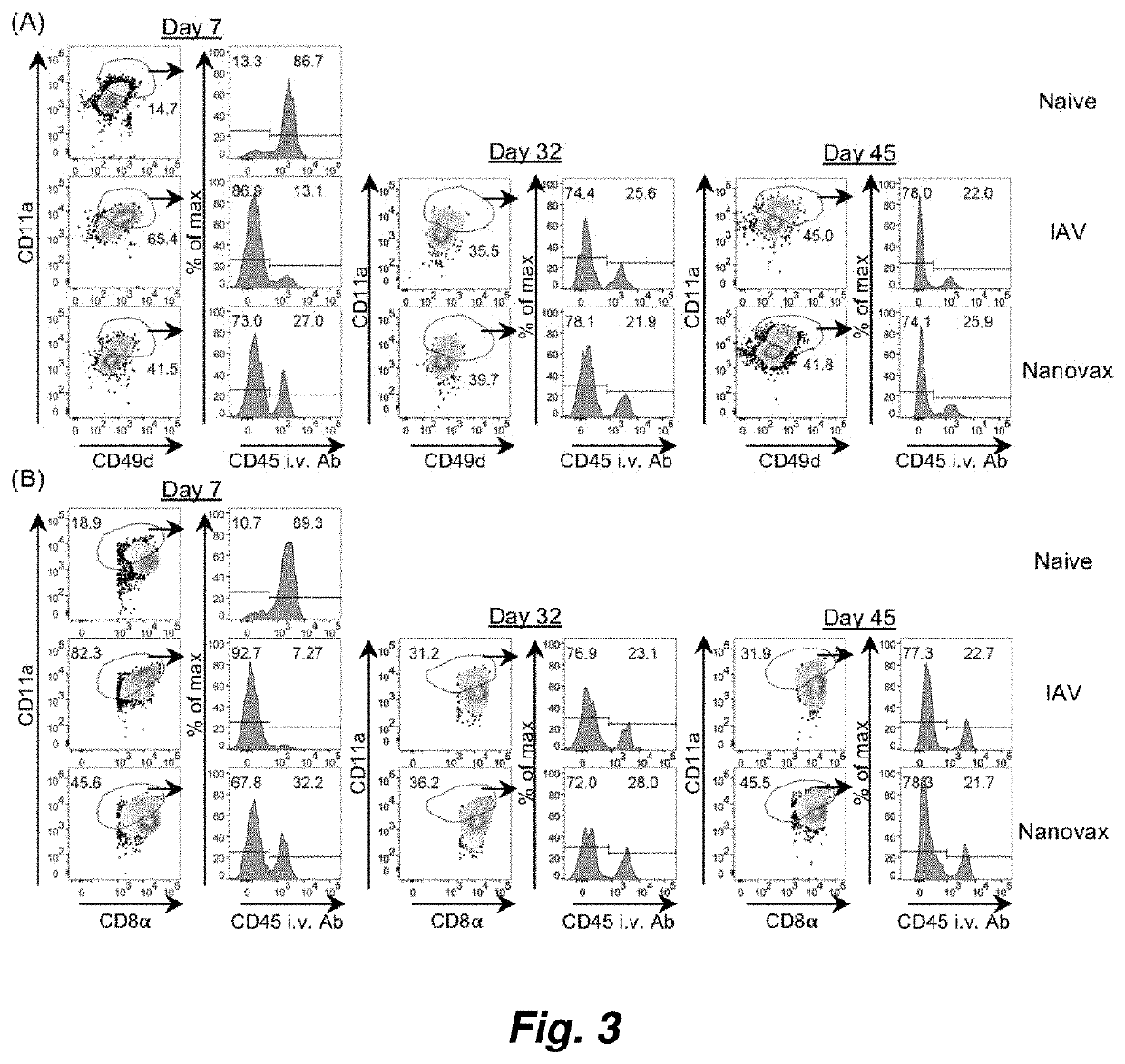Influenza nanovaccine
a technology of influenza nanovaccine and immunogenic composition, which is applied in the field of immunogenic compositions, can solve the problems of affecting public health and the economy, causing a lot of damage, causing a lot of harm,
- Summary
- Abstract
- Description
- Claims
- Application Information
AI Technical Summary
Benefits of technology
Problems solved by technology
Method used
Image
Examples
example 1
ride Nanovaccine Induces Robust Pulmonary B and T Cell Immunity and Confers Protection Against Homologous and Heterologous Influenza A Virus Infections
[0103]Influenza A virus (IAV) is a major cause of worldwide respiratory illness. Given the disease severity, associated economic costs, and recent appearance of novel IAV strains, there has been a renewed interest in developing novel and efficacious “universal” IAV vaccination strategies. It is thought that immunizations capable of generating local (i.e., nasal mucosa and lung) tissue-resident memory T and B memory cells in addition to systemic immunity offer the greatest protection against future IAV encounters. Current IAV vaccines are designed to largely stimulate IAV-specific antibodies, but do not generate the lung-resident memory T and B cells induced during IAV infections. Disclosed herein is intranasally administered biocompatible polyanhydride nanoparticle-based IAV vaccine (IAV-nanovax) capable of providing robust protection...
example 2
ax Induces Influenza Specific Memory CD4 and CD8 T Cell Response in the Nasal Passage and Lungs
[0153]FIG. 12 and FIG. 13 illustrate the presence of tissue-resident antigen CD4 T cells, CD8 T cells 45 days post initial vaccination (i.n. challenge with the IAV-nanovax) using surface marker expression algorithms and tissue localization techniques. Within the nasal tissue-resident antigen-reactive T cell population, surface marker expression further documented the presence of memory CD4 T cells and CD8 T cells. Multiple reports in the literature underscore the need for tissue resident memory T cells (referred to as Trm) to establish long-term protection against influenza infection.
[0154]The same surface marker expression analysis has been used to document the presence of tissue-resident antigen-reactive CD4 T cells and CD8 T cells in the nasal passages 45 days after initial i.n. challenge with the IAV-nanovax. Within the nasal tissue-resident antigen-reactive T cell population, surface ...
example 3
ax Administration Induces Both a Local (i.e., Lung) as Well as Systemic (Spleen) Immune Response but that i.n. Administration is Necessary to Drive a Robust Adaptive Immune Response within the Lungs
[0155]FIG. 14 illustrates the presence of antigen reactive B cells (germinal center B cells), CD4 T cells and CD8 T cells 45 days after either i.n. or subcutaneous (s.c.) administration of the IAV-nanovax, these antigen reactive cells were only found in the lung after i.n. challenge. Antigen reactive cells were found in the spleen (indicative of system distribution) after both i.n. and s.c. challenge (with more cells found in the spleen after s.c., as expected). The figure further demonstrates that the presence of antigen-reactive B cells, CD4 T cells and CD8 T cells in the spleen after i.n. vaccination with the IAV-nanovax.
PUM
| Property | Measurement | Unit |
|---|---|---|
| diameter | aaaaa | aaaaa |
| diameter | aaaaa | aaaaa |
| Polydispersity Index | aaaaa | aaaaa |
Abstract
Description
Claims
Application Information
 Login to View More
Login to View More - R&D
- Intellectual Property
- Life Sciences
- Materials
- Tech Scout
- Unparalleled Data Quality
- Higher Quality Content
- 60% Fewer Hallucinations
Browse by: Latest US Patents, China's latest patents, Technical Efficacy Thesaurus, Application Domain, Technology Topic, Popular Technical Reports.
© 2025 PatSnap. All rights reserved.Legal|Privacy policy|Modern Slavery Act Transparency Statement|Sitemap|About US| Contact US: help@patsnap.com



